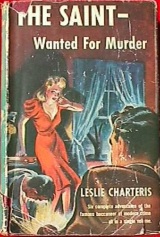Ring a Ding Ding
I always enjoy a good foreign film, but I, like most people, do have a certain aversion to them. I would say the greatest problem with reading subtitles is that not only can you not leave the room while watching them and still catch the dialogue, but you also cannot doze off and listen with your eyes closed. Perhaps a more substantial complaint about subtitles, however, is that they distract from the action and cinematography. This is especially true for Italian film because the language is typically spoken troppo quickly, that one does not have time to look around after reading a line of dialogue.
Nevertheless, I would never pass up an opportunity to see my favorite Italian actor: Marcello Mastroianni. For those who do not know about the wonderfully talented (and handsome) man, he could be described as Italy’s Cary Grant: well adept at both drama and comedy and still sexy when he went gray.
Divorzio all’Italiana contains all the elements of an American romantic comedy but takes a rather bleak approach. One can understand how the base plot about a man who lures his wife to cheat so he can take a lover would attract the attention of U.S. filmmakers, but Divorce American Style five years later is less about infidelity and more about the hardships of single life for the separating couple.
Divorce – Italian Style has other elements that would have been a sure taboo if they had shown up in the American version. Our protagonist, Ferdinando, is in love with his 16-year-old cousin. He is 37. What begins as mere longing on Ferdinando’s part, however, is consummated just prior to the girl being shipped back to Catholic school. Ignoring the troubles of incest and statutory rape, it takes little for the viewer to get on board with that romance, but the remainder of the film, while driven by that love, does not focus on it.
After making love to his adolescent cousin in the lush garden outside the large, although rundown home occupied by both sects of the family, Ferdinando consults Italian law to discover how his crime could be punished. simultaneously, a trial proceeds to the conviction of a woman for shooting her husband for infidelity. Ferdinando finds the penalty is up to seven years for murdering a cheating spouse, however, Italian culture considers it a disgrace to the entire family, and those who associate with them, when a spouse is unfaithful. Given that Ferdinando has already comically fantasized about murdering his wife for us, he makes a natural leap to finding a suitor for su moglie, Rosalia.
The chosen culprit is a man who was in love with Rosalia prior to and during World War II. He is now a mural restorer/artist, who Ferdinando commissions to mend some ancient paintings on the walls of one room of the house. He next sets up a microphone so he can monitor activities, which progress to his liking. Ferdinando hopes that when Rosalia feigns a headache while the rest of the family goes out, it will be his opportunity to catch her in the act and unload some bullets into her. Instead he returns to find his wife leaving with a suitcase, but is unable to beat her to the train. News spreads throughout the town and the family is shunned because Ferdinando has not defended his honor by killing his wife, but he is playing it cool. When he finally does discover where the lovers are hiding, it is Rosalia’s partner’s wife who shoots him, just moments before Ferdinando reaches them. Saying “What about mine?” he next shoots his wife.
The story is a bit gruesome at times and not an obvious comedy. It certainly uses Hitchcockian humor that the British/American director inserted into all his films. Like a Hitchcock flick, Divorce – Italian Style deals with serious circumstances but is filled with goofy moments and circumstances that seem odd until the viewer realizes they happen for comedic effect, albeit dry effect. Ferdinando has a lively imagination that involves voice-over dialogue of a famed attorney pleading his case before the crime is ever committed, in addition to visual dramatizations of various deaths that could befall Rosalia. I’m not sure if Mastroianni’s appearance in the movie is also a joke, but it must be noted that he sacrifices his good looks in order to sport a mustache and side-parted lacquered hair that today we would associate with a child molester. Apt, aye?
One final note: The greatest joke in the film is that when the entire family, minus Rosalia, go out, they are attending the opening of La Dolce Vita, a Federico Fellini film staring Mastroianni and released the year prior to Divorce. Granted the scenes shown are exclusively of the lustful Anita Ekberg, but nevertheless, an inside joke for the astute.
Filed under: Comedy, Drama, Foreign | Tagged: Anita Ekberg, Daniella Rocca, Federico Fellini, Macello Mastroianni, Pietro Germi, Ring a Ding Ding |












This was an entertaining review! The Italian comedies of this period were delightfully funky. This was one of the more accessible ones, as opposed to SHOOT LOUD…LOUDER…I DON’T UNDERSTAND with Marcello and Raquel Welch. I always loved that title, though.
Good blog and offering nice film reviews and news….keep it up……….